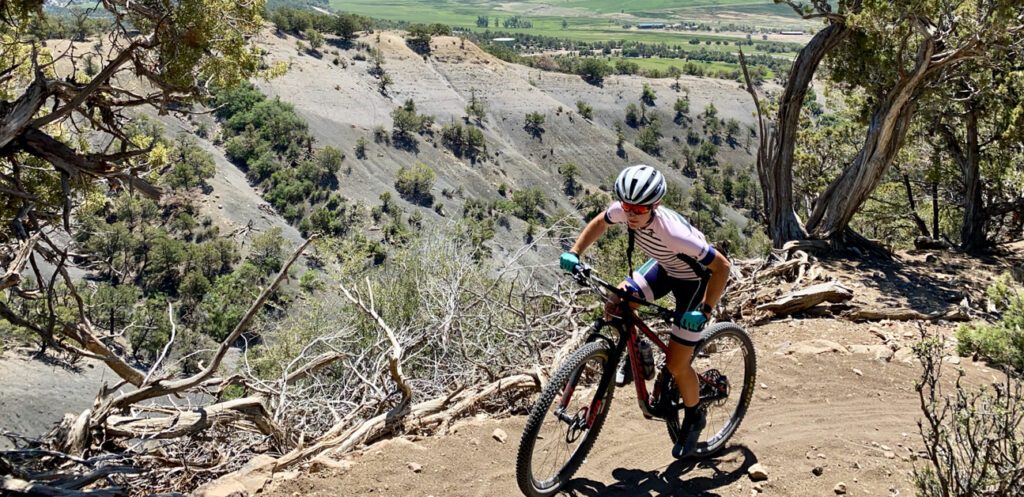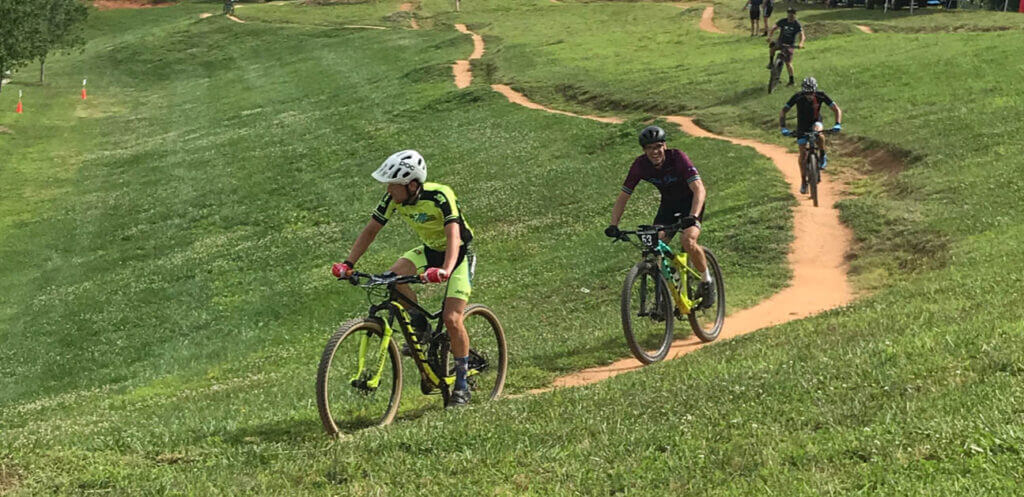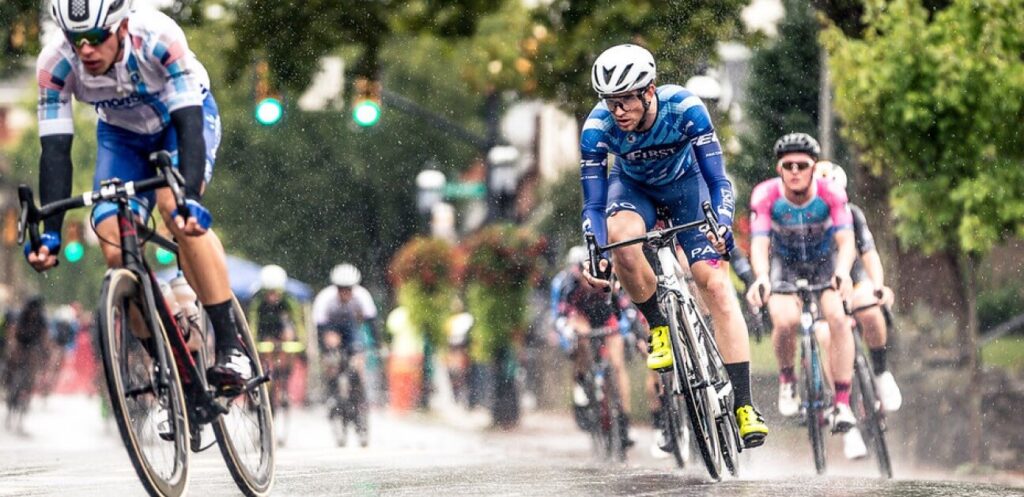Tips for Becoming a Faster Cyclocross Racer with Laura Alagna
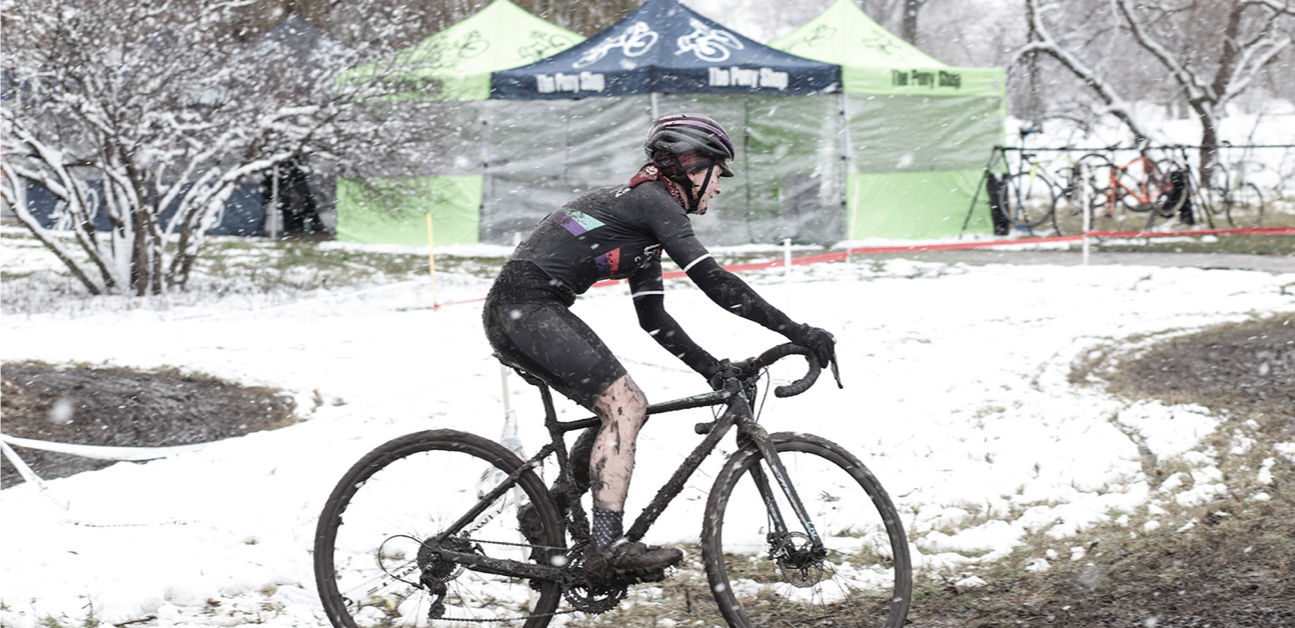
If you like mud, inclement weather, and running up hills just to descend through sand, then cyclocross might be the perfect discipline for you. Cyclocross is a unique cycling discipline with high physical intensity and man-made barriers and obstacles. Despite some intimidating racing elements, it’s a very welcoming sport and a great racing discipline for beginners and veterans alike. If you want to race cyclocross or are looking to take it more seriously, Successful Athlete, Laura Alagna, is here to share her tips for getting started and getting a category two upgrade.
Share your success story and tell us how TrainerRoad helped you reach your goals.
When Laura started cycling, she had no intention of becoming a cyclocross racer. In fact, she didn’t even mean to become such an avid cyclist. Laura had never been too interested in cycling, especially in Chicago, where the roads are characteristically busy. Despite her hesitations around riding, her boyfriend at the time, who was an enthusiastic cyclist, insisted she try it out. So about six years ago, Laura got a road bike and started piecing some road rides together.
Ride by ride, her comfort grew, and with it, her enjoyment. Before she knew it, Laura’s passion for cycling had surpassed her boyfriends, and she was frequently riding after work and on the weekends. She was soon a regular at a local women’s group ride, and cycling was a source of joy and community for Laura.
Getting Started with Cyclocross
At the same local group ride, Laura connected with a handful of cyclists new to the sport. Among this group of friends, several of them we’re interested in trying out cyclocross. Laura had never heard of cyclocross before, but she decided to go and support her friends at a race.
Adaptive Training
Get the right workout, every time with training that adapts to you.
Check Out TrainerRoadEven with zero expectations around cyclocross, Laura was still totally taken aback when she went to her first race. The format and the community were nothing like she could have imagined. As she watched athletes dismount their bikes just to run over barriers and ride through sand, Laura couldn’t help but think, “What is this crazy sport?”
From Spectator to Competitor
Crazy? Maybe. Fun? Must be. After that first race, Laura spent an entire season going to cyclocross to spectate. That first season was full of lots of heckling, spending time with friends, and giving out questionable hand-ups (whipped cream, Jell-O shots, etc.) to brave competitors. While Laura didn’t race that season, she spent a lot of time considering the possibility.
From the outside looking in, the racing itself can be intimidating. Cyclocross courses are characterized by their technical and physical demands. Courses will frequently include sand, wooden barriers, steep pitches, and sketchy descents. On top of that, cyclocross season is usually in the fall or winter when the weather is on the colder side, and the courses are rougher. All the while, cyclocross bikes are fully rigid drop-bar bikes that lend themselves to being shouldered much more than they do traversing technical terrain. On top of that, cyclocross is very physically demanding. Cyclocross races are short and intense, requiring athletes to output sharp bursts of power repeatedly.
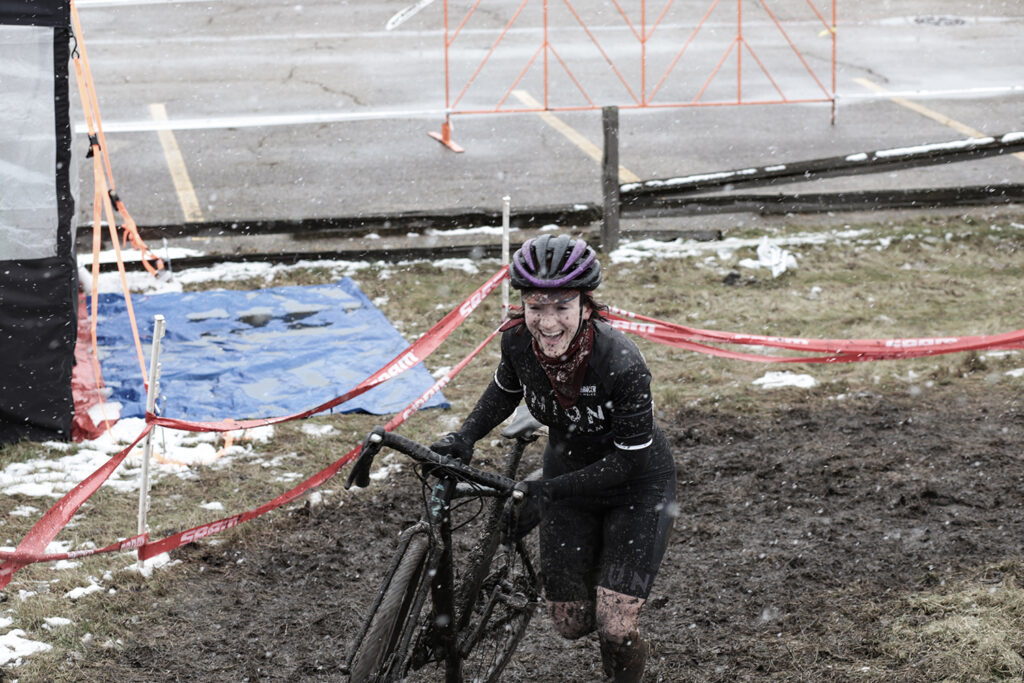
So, where do you start when you want to get into this “crazy” sport? Laura had already established some solid fitness and fundamental skills through road riding. Getting started with cyclocross meant getting a cyclocross-specific bike and working on some new skills. When she began racing cat four, she implemented a few key technical strategies that helped her progress.
Breaking Down the Skills Barrier
When Laura first started racing, she made a conscious effort to be strategic with her race plan and line choices. For one, when she knew she was about to reach a section she couldn’t ride confidently, she would get off her bike and run instead. Instead of half-heartedly riding something she wasn’t committed to, she would frequently pass other athletes on foot who couldn’t ride that section either.
Meanwhile, Laura spent a lot of time practicing the fundamentals. She focused on mounting, dismounting, and making those motions as fluid as possible. Doing a lot of reps outside of racing helped her build muscle memory, which saved a lot of time during races. When she’d go to the park to work on these foundational skills, she’d also practice her cornering, bunny-hopping, and weight distribution.
Skills Tip:
- Being conscious of weight distribution when you practice fundamental skills can help make this a second nature skill on race day.
When she became more confident with her foundational skills, she started to work on some of the more niche cyclocross skills, like riding in sand. Her breakthrough with sand happened one winter when Laura got a fat bike. Regularly riding the fat bike on snow helped Laura hone in her traction skills. She noted that riding on ice was similar to riding in the sand. When she loses traction on sand or snow, Laura eases off the power, removes weight from the front end of her bike, and lets the bike find its natural path through the terrain.
Getting Started with TrainerRoad
Within Laura’s first year of cycling, she got into a road crash that resulted in a broken collarbone. Her injury meant she couldn’t ride outside for three months. Anxious to hold onto the fitness she had just built, Laura turned to her indoor trainer. At the recommendation of a friend, she decided to use TrainerRoad for her indoor workouts.
With just a magnetic trainer, a speed sensor, and VirtualPower, Laura was all set to train indoors using TrainerRoad. Before using TrainerRoad, Laura’s only indoor training had been done without structure, so she was surprised at how productive her workouts were. She became consistent with her training and ended up using TrainerRoad through her healing process and winter. When she resumed group rides in the spring, she was fitter and faster than she had been before her injury. She was able to join group rides she had previously avoided without getting dropped.
Indoor Training Resources
Four years later, Laura continues to train indoors with a low-volume TrainerRoad training plan. After her nine to five job, Laura will come home and do structured workouts right after work. With three planned workouts per week, Laura does the majority of her structured workouts on the weekdays to leave room for group rides and skills work on the weekends. The low-volume plan is the perfect fit because most weeks only have three scheduled workouts ranging between sixty and ninety minutes. It leaves Laura plenty of time to fit a skills day and a group ride on the weekend. The combination of structured training, social riding, and skills work is a perfect balance that keeps Laura motivated and on an upwards trajectory.
The Training Learning Curve
Since starting her first structured training plan, Laura has learned a lot about structured training and what she needs to succeed. Of all the training takeaways, though, fueling the work has been the biggest. When she first started incorporating intensity and structure, she didn’t adjust her eating habits and felt under-fueled.
Initially, when she felt under-fueled, she thought she wasn’t getting enough protein in. But when she looked more closely at what she was eating, she discovered she wasn’t getting in nearly enough carbohydrates to fuel her performance. She started focusing on taking in more fuel with carbs and noticed an immediate improvement. She didn’t have to turn the intensity down during her workouts or rest as frequently during intervals.
Training Tip
- You need carbohydrates to fuel your workouts. Try eating a carb-rich meal two to three hours before your structured workouts while consumoing additional carbohydrates during your workout.
- How to Use Carbs for Maximum Performance
Laura has also learned that it’s not always easy to get all your training in when you’re busy. When Laura misses workouts, she uses the workout variants to add time or subtract time from her subsequent workouts. This way, she can maintain the same structure and the same training goals with her schedule.
Workout Tip
- Most TrainerRoad workouts have ‘plus’ or ‘minus’ variations. If you don’t have time to complete the entire workout on your training plan, you can swap the structured workout on your Calendar for a variation with less time. If you want to take on a longer workout, you are welcome to swap your workout for a plus version.
Cat Four to Cat Two
When Laura got her cat three upgrade, she figured that was the end of her progression through the categories. She didn’t think she’d ever be equipped to race with the Cat 2 women. Her skills and fitness said otherwise. The accumulation of skills work, structured training, additional strength training, and improved training habits helped Laura reach a 190 FTP and earn her Cat 2 upgrade. Way to go, Laura!
Tell us your story. Success isn’t always a race win. It can be life-changing health improvements, reaching a personal goal, or more.
For more cycling training knowledge, listen to Ask a Cycling Coach — the only podcast dedicated to making you a faster cyclist. New episodes are released weekly.
